Stem-cell-derived trophoblast organoids model human placental development and susceptibility to emerging pathogens
- PMID: 35523141
- PMCID: PMC9136997
- DOI: 10.1016/j.stem.2022.04.004
Stem-cell-derived trophoblast organoids model human placental development and susceptibility to emerging pathogens
Abstract
Trophoblast organoids derived from placental villi provide a 3D model system of human placental development, but access to first-trimester tissues is limited. Here, we report that trophoblast stem cells isolated from naive human pluripotent stem cells (hPSCs) can efficiently self-organize into 3D stem-cell-derived trophoblast organoids (SC-TOs) with a villous architecture similar to primary trophoblast organoids. Single-cell transcriptome analysis reveals the presence of distinct cytotrophoblast and syncytiotrophoblast clusters and a small cluster of extravillous trophoblasts, which closely correspond to trophoblast identities in the post-implantation embryo. These organoid cultures display clonal X chromosome inactivation patterns previously described in the human placenta. We further demonstrate that SC-TOs exhibit selective vulnerability to emerging pathogens (SARS-CoV-2 and Zika virus), which correlates with expression levels of their respective entry factors. The generation of trophoblast organoids from naive hPSCs provides an accessible 3D model system of the developing placenta and its susceptibility to emerging pathogens.
Keywords: SARS-CoV-2; X chromosome inactivation; Zika virus; cytotrophoblast; extravillous trophoblast; naive pluripotency; placental development; single-cell transcriptomics; syncytiotrophoblast; trophoblast organoids; trophoblast stem cells.
Copyright © 2022 Elsevier Inc. All rights reserved.
Conflict of interest statement
Declaration of interests I.U.M. serves on the Scientific Advisory Board of Luca Biologics. The Boon laboratory has received unrelated funding support in sponsored research agreements from AI Therapeutics, Green Light Biosciences Inc., and Nano targeting & Therapy BioPharma Inc. The Boon laboratory has received funding support from AbbVie Inc., for the commercial development of SARS-CoV-2 mAb. A.C.M.B. is a recipient of a licensing agreement with AbbVie Inc., for commercial development of SARS-CoV-2 mAb.
Figures
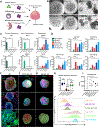
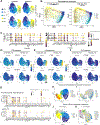
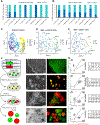
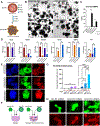
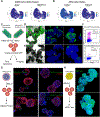
Comment in
-
Taking the guesswork out of journal submission with Community Review.Cell Stem Cell. 2022 May 5;29(5):663-666. doi: 10.1016/j.stem.2022.04.015. Cell Stem Cell. 2022. PMID: 35523136
Similar articles
-
Generation of 3D Trophoblast Organoids from Human Naïve Pluripotent Stem Cells.Methods Mol Biol. 2024;2767:85-103. doi: 10.1007/7651_2023_496. Methods Mol Biol. 2024. PMID: 37402094 Free PMC article.
-
Trophoblast organoids as a model for maternal-fetal interactions during human placentation.Nature. 2018 Dec;564(7735):263-267. doi: 10.1038/s41586-018-0753-3. Epub 2018 Nov 28. Nature. 2018. PMID: 30487605 Free PMC article.
-
Single-cell assessment of primary and stem cell-derived human trophoblast organoids as placenta-modeling platforms.Dev Cell. 2024 Mar 25;59(6):776-792.e11. doi: 10.1016/j.devcel.2024.01.023. Epub 2024 Feb 14. Dev Cell. 2024. PMID: 38359834
-
Progress in deciphering trophoblast cell differentiation during human placentation.Curr Opin Cell Biol. 2020 Dec;67:86-91. doi: 10.1016/j.ceb.2020.08.010. Epub 2020 Sep 18. Curr Opin Cell Biol. 2020. PMID: 32957014 Review.
-
Early differentiation and gene expression characteristics of trophoblast lineages†.Biol Reprod. 2023 May 10;108(5):709-719. doi: 10.1093/biolre/ioad027. Biol Reprod. 2023. PMID: 36892411 Review.
Cited by
-
Ethical considerations for advancing research using organoid models derived from the placenta.Hum Reprod Update. 2025 Jul 1;31(4):392-401. doi: 10.1093/humupd/dmaf007. Hum Reprod Update. 2025. PMID: 40096642 Free PMC article. Review.
-
Engineering placenta-like organoids containing endogenous vascular cells from human-induced pluripotent stem cells.Bioeng Transl Med. 2022 Sep 23;8(1):e10390. doi: 10.1002/btm2.10390. eCollection 2023 Jan. Bioeng Transl Med. 2022. PMID: 36684087 Free PMC article.
-
Early human development and stem cell-based human embryo models.Cell Stem Cell. 2024 Oct 3;31(10):1398-1418. doi: 10.1016/j.stem.2024.09.002. Cell Stem Cell. 2024. PMID: 39366361 Free PMC article. Review.
-
Rapid retinoic acid-induced trophoblast cell model from human induced pluripotent stem cells.Sci Rep. 2024 Aug 6;14(1):18204. doi: 10.1038/s41598-024-68952-0. Sci Rep. 2024. PMID: 39107470 Free PMC article.
-
COVID-19 and pregnancy: clinical outcomes; mechanisms, and vaccine efficacy.Transl Res. 2023 Jan;251:84-95. doi: 10.1016/j.trsl.2022.08.007. Epub 2022 Aug 12. Transl Res. 2023. PMID: 35970470 Free PMC article. Review.
References
-
- An C, Feng G, Zhang J, Cao S, Wang Y, Wang N, Lu F, Zhou Q, and Wang H (2020). Overcoming Autocrine FGF Signaling-Induced Heterogeneity in Naive Human ESCs Enables Modeling of Random X Chromosome Inactivation. Cell Stem Cell 27, 482–497 e484. - PubMed
-
- Angerer P, Haghverdi L, Buttner M, Theis FJ, Marr C, and Buettner F (2016). destiny: diffusion maps for large-scale single-cell data in R. Bioinformatics 32, 1241–1243. - PubMed
Publication types
MeSH terms
Grants and funding
LinkOut - more resources
Full Text Sources
Other Literature Sources
Medical
Molecular Biology Databases
Miscellaneous

